
Museum Haus Konstruktiv begins its annual program with a comprehensive solo exhibition by Alicja Kwade (b. 1979 in Katowice, Poland, lives in Berlin). This renowned sculptor and conceptual artist is a relativist who skeptically questions what is supposedly our reality. In her multimedia oeuvre, Kwade takes this approach as a basis for addressing a wide range of very different phenomena and conceptual models from physics, philosophy and sociology, translating these into her distinctive art. This results in works with a conceptual background, which are as sensorially poetic as they are formally stringent.
For the current exhibition the artist has conceived a new, extensive installation: a walk-through grid structure, in which differently sized solid balls of natural stone float above the observers’ heads in apparent weightlessness.
With LinienLand (LineLand) as the title of the exhibition at Museum Haus Konstruktiv, Alicja Kwade makes reference to Edwin Abbott’s 1884 novella Flatland: A Romance of Many Dimensions, in which a square describes its life in Flatland and reports on its excursions into Lineland and Spaceland. To this day, the text is still received as a mathematical essay on the fourth dimension.
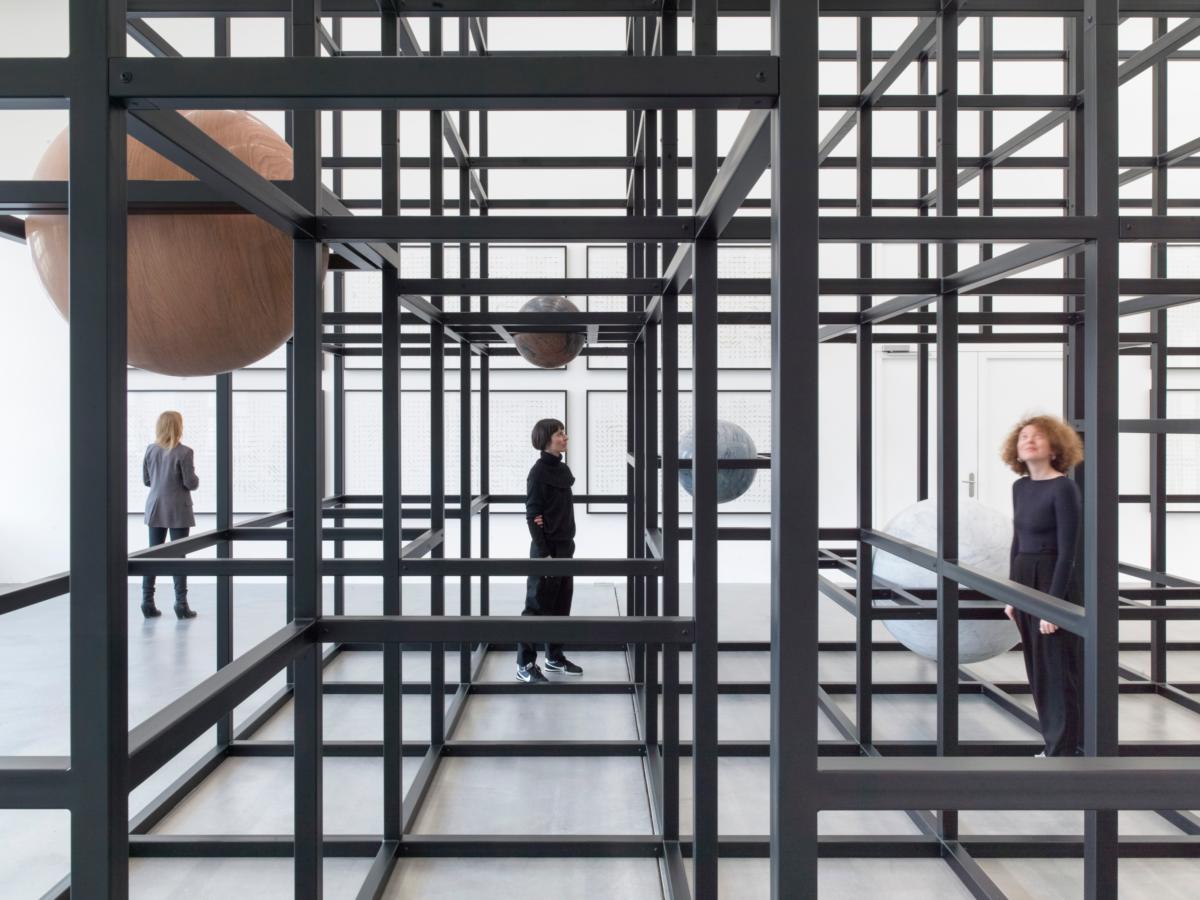
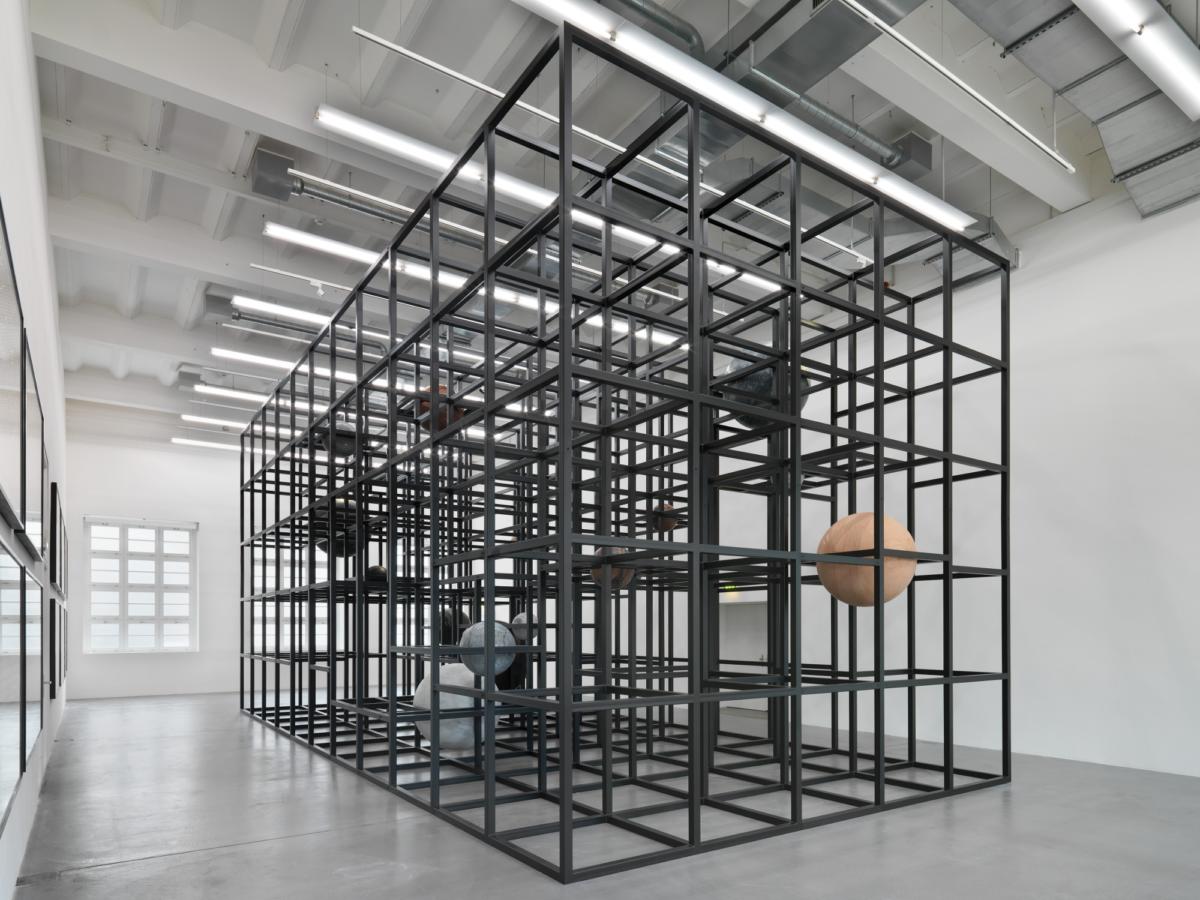
LinienLand is also the title chosen by Kwade for her latest work, made specially for the 1st floor at Museum Haus Konstruktiv: a walk-through three-dimensional grid structure, in which differently sized solid spheres of natural stone float in apparent weightless- ness. Here, the artist refers to the idea of parallel worlds, which has been the subject of much discussion since antiquity. Against this backdrop, the extensive structure, based on a system of 5 x 5 x 11 squares, is to be read as a multiverse, whereby each individual cubic metal boundary implies a distinct reality. The grid’s steel system correlates with the stones: Kwade adheres to a strict self-imposed principle, according to which, via the shifting within the system, the individual bars form the spheres’ supports. The resulting gateways invite the visitors to enter a multiverse and to experience the gravity of the large stone spheres, which bring to mind a gravitational field. The natural stones come from the various continents of our Earth and also symbolize them. The stone material itself, with its various layers that have formed over several million years and make it possible to determine its age, acts as a kind of timescale. In LinienLand, Alicja Kwade has managed to implement her thoughts on space, gravity and time in a fascinating way.
Idols, a twelve-part piece that shows brass clock hands arranged on paper, is based on Einstein’s findings regarding the existence of gravitational waves in spacetime, triggered by an accelerated mass. The twelve variations capture various rotational stages of wave motion.
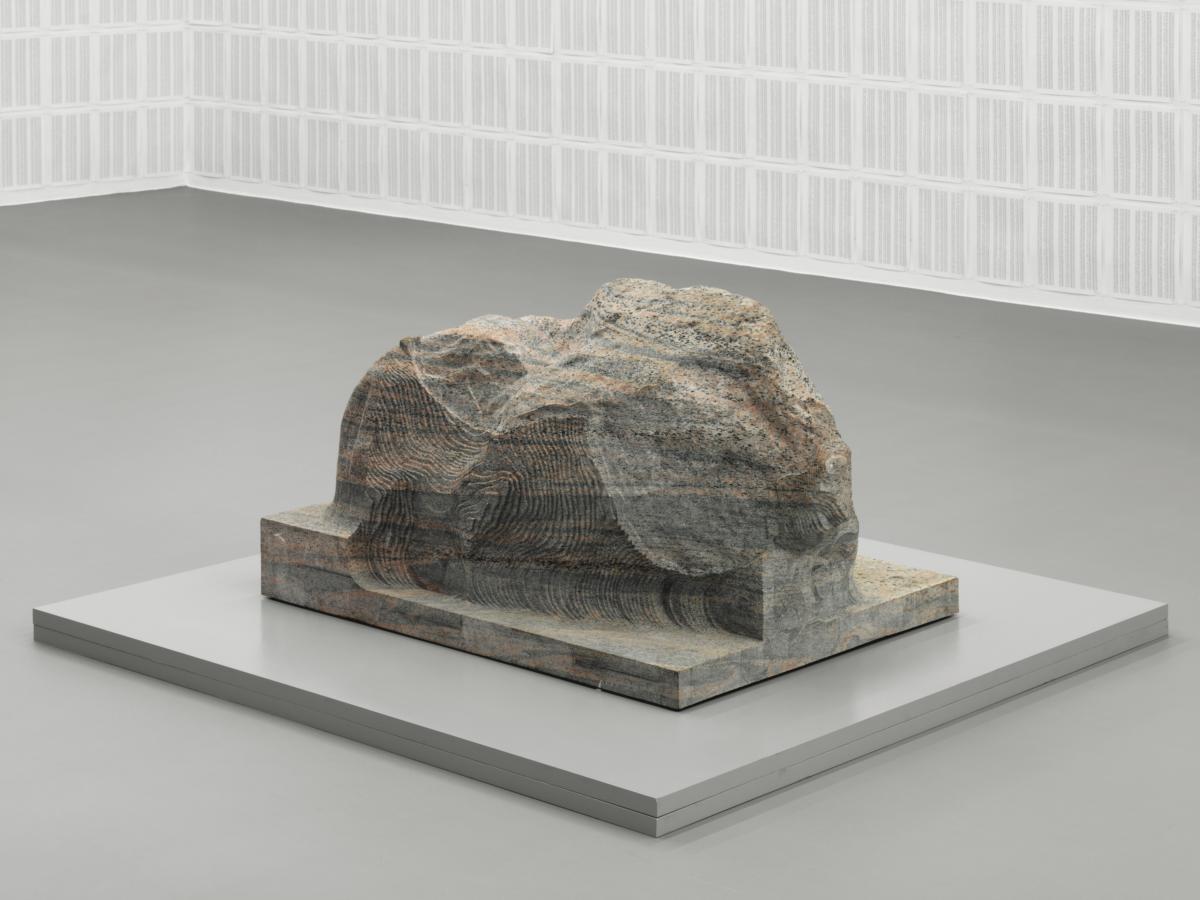
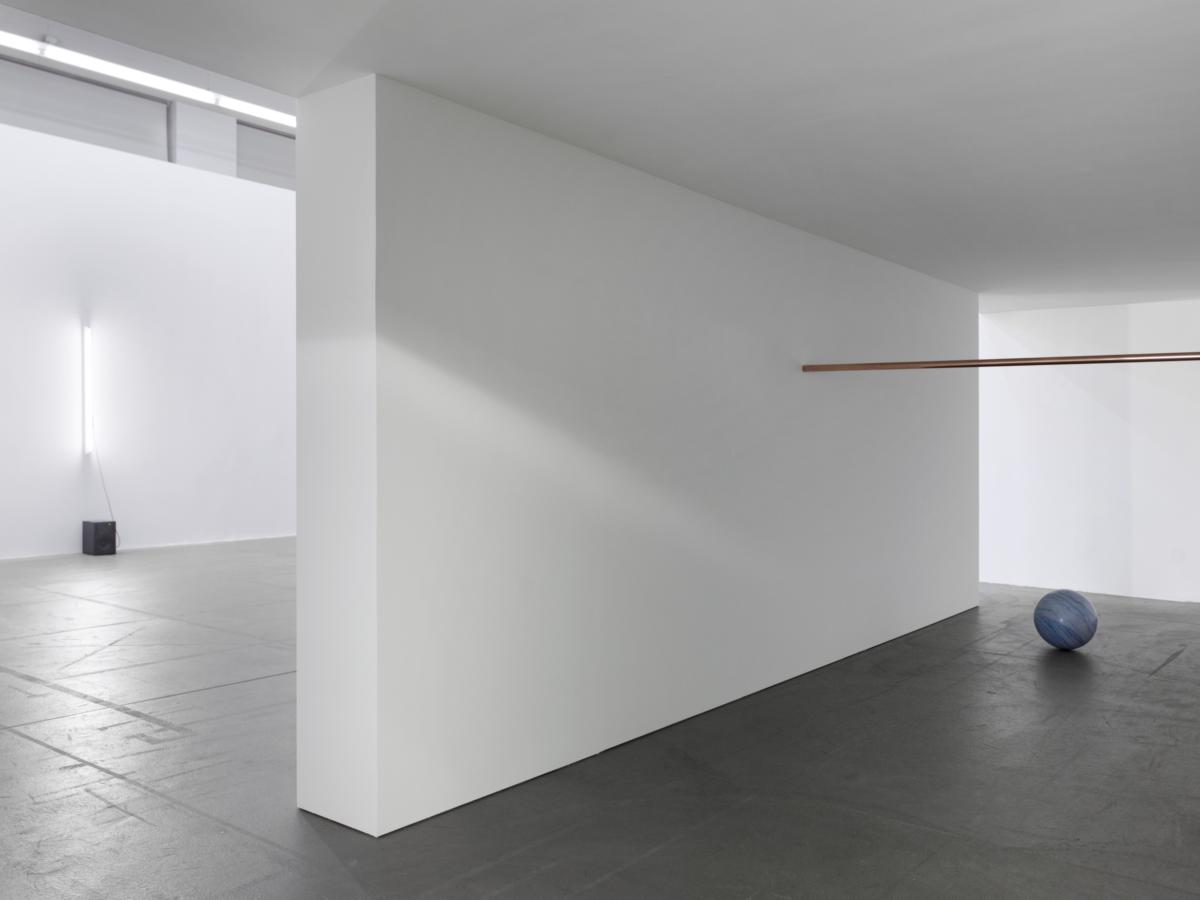
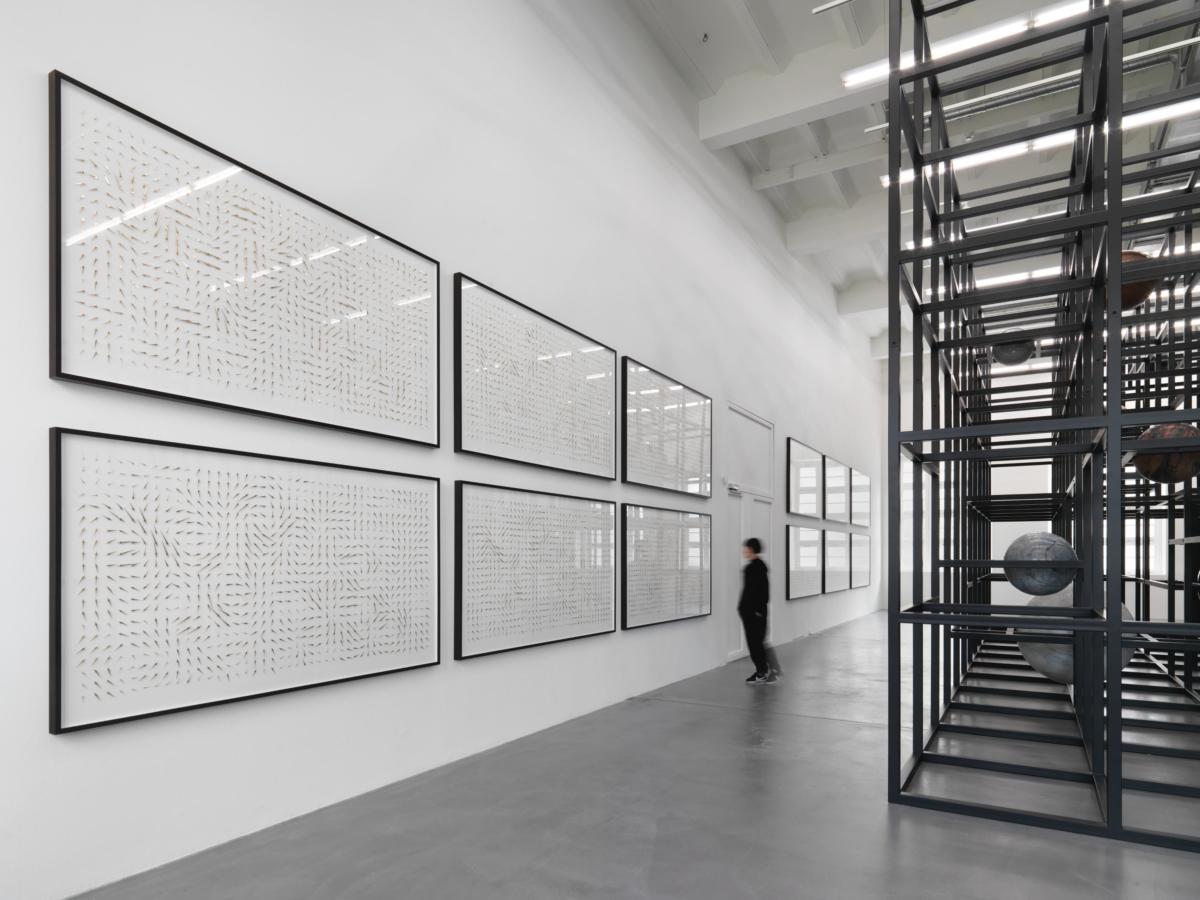
In the installation Gegebenenfalls die Wirklichkeit (Possibly Reality), presented on the 2nd floor, the artist addresses the concept of reality once again. Here, Kwade asks what actually constitutes an object, what means of description are at our disposal, and what the relationship is between a body’s material presence and our knowledge about it. A granite sculpture rests in the middle of the exhibition space: This is a partial copy of a boulder found in nature, the surface of which was measured in a 3D scanning process. The collected data was then digitally transferred to a milling machine that autonomously created the exhibited object – from the same stone material as the original. Kwade caused the milling process to halt, so that the sculpture appears to pause in a state between natural and technological form. Hanging on the walls, there are over 2,000 printouts with the coordinates of the object’s topography, described in numerical sequences based on the X, Y and Z axes proceeding from the middle of the stone. Of the 30,000 pages in total, the rest are stored in copper time capsules or lie stacked on the floor. The question arises as to what is being observed here (the real, or merely the depiction of the real) and how information about the world of things is shown.
On the 4th floor, phenomena of chance and spacetime are thematized. A copper pipe, with funnels at its ends, passes through two walls and connects two deceptively similar halves of the space. If the observer looks through the funnels, they find an almost identical situation at the opposite end. In each instance, the random flickering of a fluorescent tube is seen. This is connected to a loudspeaker, so the gas discharge can also be experienced acoustically. Thus, the absurd duplication of random occurrences is perceived both acoustically and visually.
Imprint
| Artist | Alicja Kwade |
| Exhibition | LinienLand |
| Place / venue | Museum Haus Konstruktiv, Zurich |
| Dates | February 2 – May 6, 2018 |
| Curated by | Sabine Schaschl |
| Website | www.hauskonstruktiv.ch |
| Index | Alicja Kwade Museum Haus Konstruktiv Sabine Schaschl |
